Both bookshelf and tower speakers offer a great listening experience when curating a home audio system. Tower speakers otherwise known as floor standing speakers are typically tall and sit directly on the floor while bookshelf speakers are smaller and usually placed on a shelf, stand or table.
However choosing between them can be a bit of a quandary as both offer their individual unique advantages depending on your room, budget and preferences. Here we highlight and contrast the elements of each speaker kind to make your decision easier.
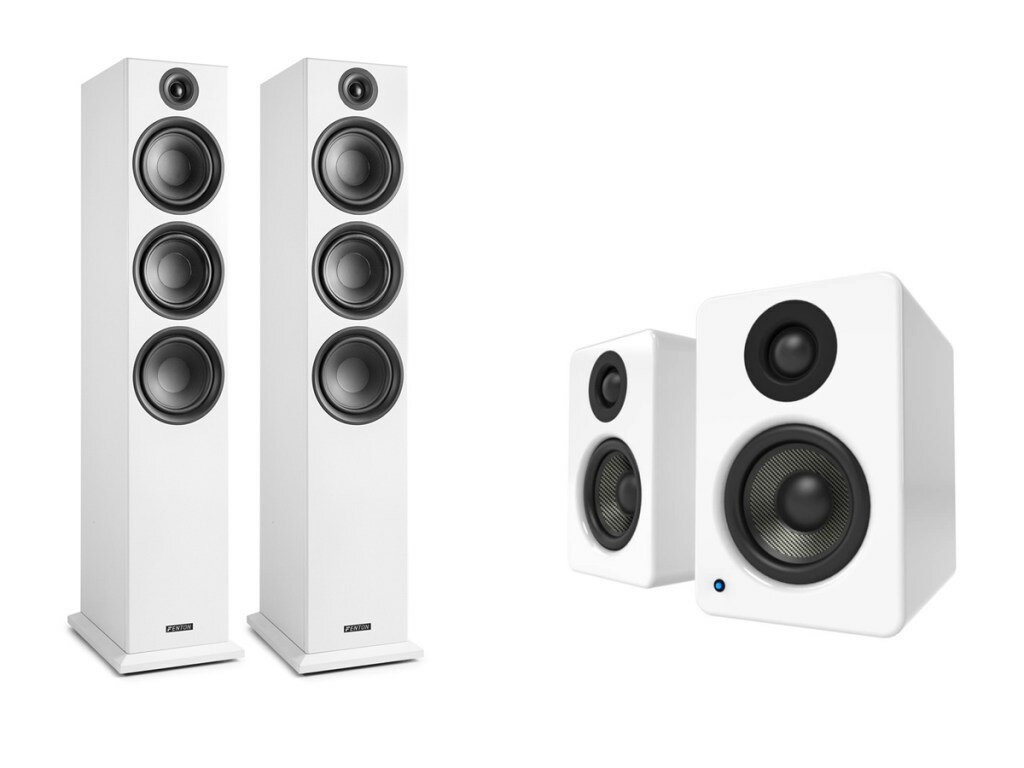
Bookshelf Speakers
Bookshelf speakers, as their name indicates, are typically small enough to fit on a bookshelf, stand or table. Most bookshelf speakers will be two-way speakers with a tweeter and bass driver due to their modest size. Typically, bookshelf speakers are not high-efficiency models.
Bookshelf speakers, when set up properly, may provide some of the same amazing sound qualities as floor standing speakers. While bookshelf speakers can be placed on a shelf, they sound better when placed on a speaker stand that stands out in the space, similar to what we mentioned for floor standing speakers. Although they lack the deep bass of a tower, certain versions may produce a very expansive and believable soundstage for music when used in conjunction with a subwoofer.
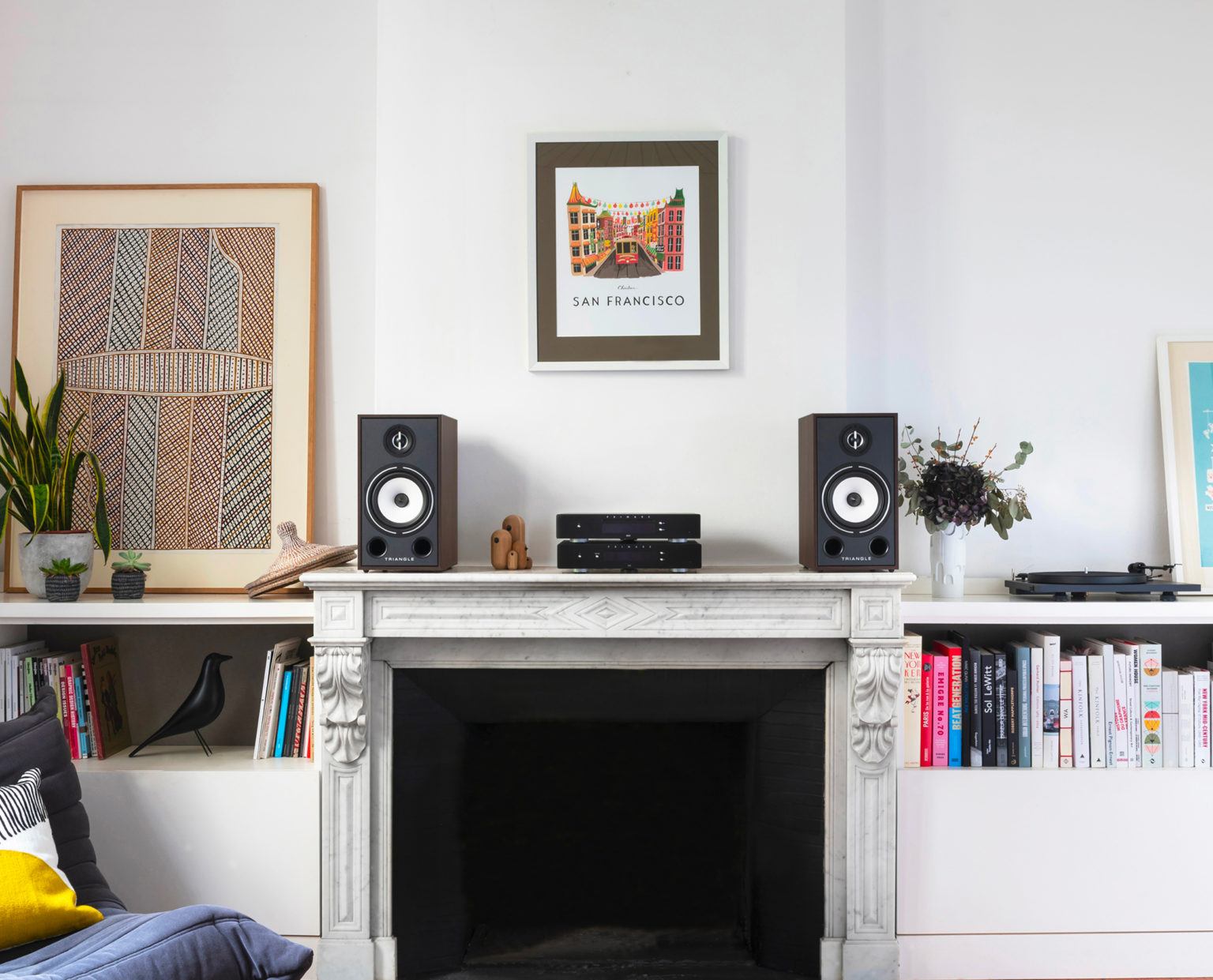
With a powerful subwoofer and bookshelf speakers, you can come quite close to the sound of a huge tower speaker. This combination generally allows you to move the speakers around more freely, which is ideal for someone who moves from one home to another on a frequent basis.
If you have a decent site for a bookshelf speaker on a stand, a floor standing speaker may be available that takes up no more floor space than the stand/speaker combination. However, from a design sense, a bookshelf on a stand appears to take up less space in a room than a floor standing speaker with a same footprint.
When placed on stands distant from your walls, their lower size might make them appear to vanish more than a tower, giving you a fantastic three-dimensional sound stage.
A subwoofer may relieve the bass strain on a smaller bookshelf, allowing it to perform better in the middle. If you want the full range sound of live sound, we recommend pairing your bookshelf speakers with a powerful subwoofer. Be sure to take a look at our most recommended budget bookshelf speakers.
Bookshelf speakers are an excellent option for home theater applications. On each side of your screen, they may be integrated inside cabinets. You may also place Atmos elevation speakers on top of them if they stick out a little in the space.
A bookshelf speaker, especially when paired with a strong subwoofer, might be a terrific way to go if you don’t have the space or funds for a large floor standing speaker.
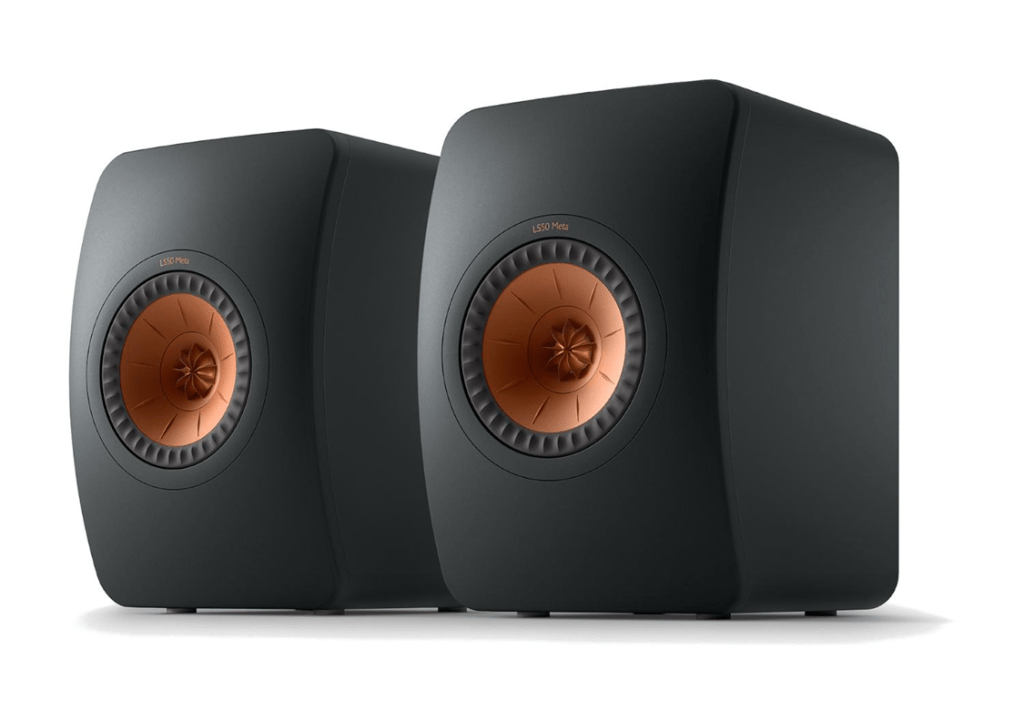
Advantages
Stereo Configuration
When you want a stereo sound experience, you should acquire bookshelf speakers. They may be placed in any room of the house to create a well rounded stage. Although most speakers are offered in pairs, you may purchase additional speakers and install them anywhere you choose.
Less Bulky
Bookshelf speakers are smaller and lighter. As a result, you may put them in your favorite spots without drawing too much attention to them. You may also place it near your bed for a more personal sound experience.
Cabinet vibrations aren’t an issue
The cabinet will never vibrate because of its small design. Cabinet vibration is one of the most irritating features of speakers since it distorts the sound.
Upgrades to bookshelf speakers are simple
Make your own home entertainment system with two or more bookshelf speakers. The front, surround, and height channels would be handled by the bookshelf speakers, while the lows would be handled by the corresponding subwoofer.

Disadvantages
Volume Restriction
The loudness of these speakers is not as high as that of their tower counterparts. While this might be a benefit, it is primarily a disadvantage when you want to relax and listen to music loudly. This also implies that these aren’t the finest speakers for a party.
Full Range Of Speakers
Since they lack the full range of most tower speakers, most require a subwoofer for extra bass.
Tower Speakers
Tower speakers are fixed on the surface or on an outrigger stand, like the term indicates. They are normally three feet in height or higher, with a seven-inch or wider width. The pool’s depth can vary between nine inches and two feet.
There are 2-way, 3-way, 4-way, and various varieties of speakers. It is indeed a overview of the number of speaker drivers required to accommodate different sound wavelengths. While it’s impossible to state that a four-way speaker is superior to a two‐way speaker, having more drivers helps the speaker manufacturer to focus the components on a narrower frequency band, resulting in faster and more effective output.
More adept speakers will, on average, transmit a greater sense of musical dynamics’ contrasts. With bigger speaker cabinets, the designer will most likely be able to create an effective speaker. Be sure to take a look at our most recommended tower speakers.
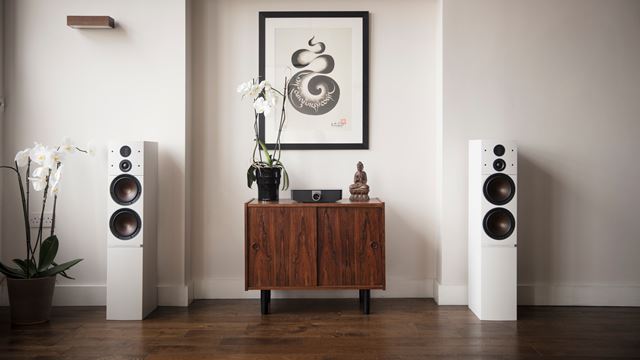
When you attend a live concert, you’ve probably felt enveloped by music. A large tower speaker will get far closer to replicating this stage sound than a pair of lesser speakers. With outstanding tower speakers, you have the sensation of being at a live performance.
When properly positioned in your house, tower speakers may also create a wonderful rounded musical environment. You’ll be in a position to close your eyes and indicate every artist independently as a result of this. That sort of audio experience is wonderful with a decent recording.
Tower speakers are also an excellent choice for home theater. They may be positioned on each side of a large flat screen TV or a projector. Tower speakers can also be used as a platform for just an Atmos upwardly projecting speaker.

Dolby Atmos, that produces sound across all corners and above, is found in the top home theater systems. Dolby Labs has verified many Atmos upwardly pointing speakers for bouncing higher outcomes off the roof. They’re known as Atmos elevation speakers. When played via high-quality tower speakers, a home theater soundscape will feel massive and energetic, much like music.
Because of their large size, tower amplifiers aren’t really ideal for every environment or person. You’ll see them unless you cover them behind an acoustic fabric false wall. However, certain manufacturers are starting to take notice of design, and we like how they look on a few of us.
When placed away from a wall, most tower speakers function best. You should install them roughly 12-18 inches inside your space to obtain the best results.
Advantages
Better Bass Output
Tower speakers will produce more bass. This is due to the fact that they have the requisite drivers. These are the speakers for you if you enjoy throwing parties where people dance to loud music. Even at maximum volume, they will provide excellent sound quality and the popular bass.
More Connectivity Options
Tower speakers allow you to connect your devices in a number of ways. You may connect through Bluetooth, USB stick, or SD card, in addition to the standard wire connections. This is definitely more convenient, particularly for the younger generation.
Aesthetic Improvements
Tower speakers are built to wow. The designers are aware that their work will be shown by the owners, which explains the abundance of creative designs. Plastic or attractively crafted wood might be used for the external cabinet. You may also choose from a variety of color combinations. These speakers, when placed next to your TV, will give your home a modern and stylish appeal.

Disadvantages
Cabinet rumbling
This might happen as a result of poor craftsmanship or over time. It’s generally more noticeable at greater volumes, which might be aggravating for folks who enjoy their music loud. Tightening the screws can sometimes remedy the problem, but it isn’t always possible.
Bulky
Despite their narrow profile, tower speakers typically take up a lot of room. They consequently can’t be employed in situations that demand discreteness such as a workstation.
Factors To Consider When Choosing Bookshelf vs. Tower Speakers
Deciding between bookshelf and tower speakers may be a challenge, since each has benefits that vary based on the circumstance. Here are the three most important aspects to think about when deciding between bookshelf and tower speakers.
Room Size
When deciding between bookshelf and tower speakers, the amount of space available in the room is an apparent consideration. But it’s not only about where you’d like to put your speakers and whether or not you have enough space; it’s also about the room’s proportions and how the frequencies and power will occupy the area.
If you have a tiny space, bookshelf or desktop speakers will suffice, especially if the majority of your listening takes place in the backscatter, or close to the speakers. Tower speakers are the superior choice if you have a larger space, especially one with a lot of seating, because they provide more output/volume and richer bass without the need for a subwoofer.
If you don’t have enough floor room for tower speakers but have a shelf or piece of furniture, the option is clear. There are a few things to bear in mind, though:
- If no furniture is available or if the intended set-up requires it, bookshelf speakers can be put on a stand.
- Tower speakers are sometimes more space-friendly than bookshelf speakers with supports due to their verticality and the fact that they don’t require a stand.
- If you already have or intend to add a subwoofer to your desktop speakers or tower speakers to improve bass, you’ll need to consider additional shelf or floor space as well as the best placement location.
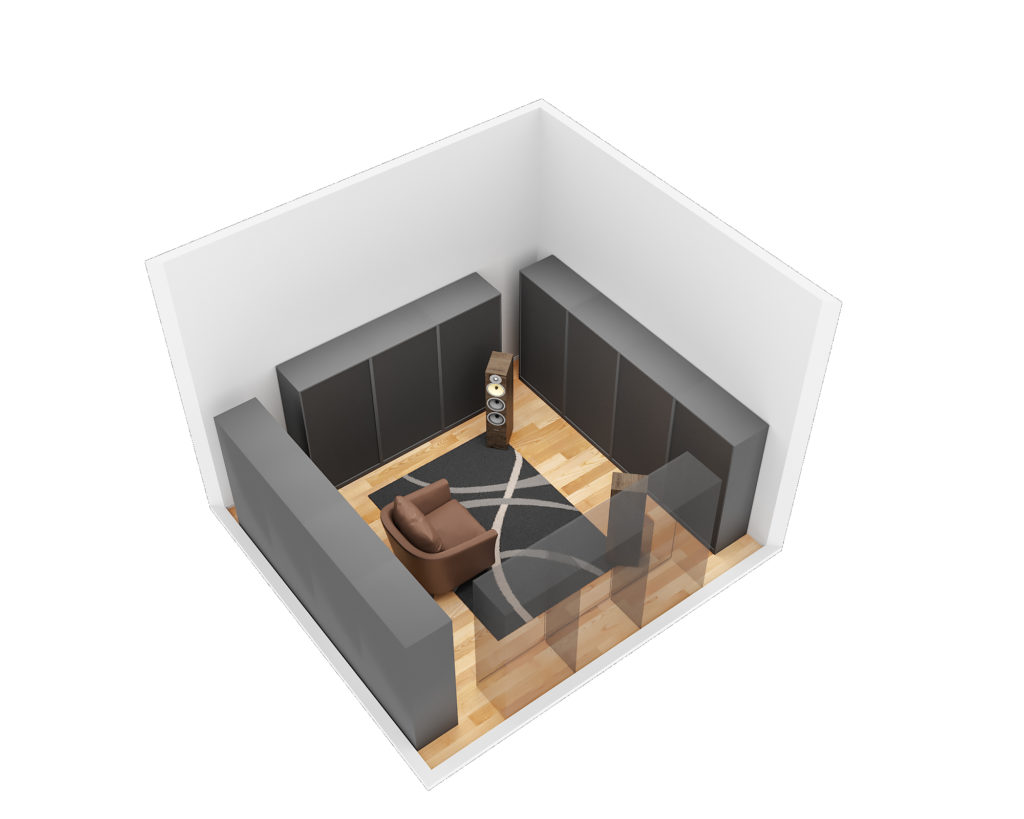
Budget
The sum of money you ought to invest is, is obviously, a major issue to take into consideration when choosing between bookshelf and tower speakers. Speakers may range in price from $50 to over $100,000.
This very large range is due to the different physical and mechanical parts that make up a loudspeaker system, as well as the broad variety of materials available for each of those pieces.
Top-performing tower speaker’s start at approximately $500 per, so if you’re on a limited budget, desktop speakers, which start at around $150 for compact bookshelf speakers and $250 for comprehensive bookshelf speakers, are a better option.
Sound
In order to create a really immersive and convincing experience, a great sounding speaker should always possess a few important features. This involves precision, refinement, and the capacity to stay loyal to the subject – to sensitively express minor nuances and, when necessary, to create a powerful yet convincing aural statement.
Any outstanding bookshelf or tower speaker should have room-energizing power and a wide dynamic range, from dazzling highs to punchy, well-defined bass.
On a deeper level, a great speaker should always stay out of the way and accurately express the emotional and behavioral feeling that the producer, singer, or music producer designed for us to have. You should forget you’re listening to speakers because you’re so engrossed in the subject – that was a true hallmark of a great speaker.
There are two key elements to consider when comparing the sound quality of desktop and tower speakers:
Volume
The loudness of a speaker is determined by its responsiveness or how well it transforms power from the amplifier into volume. The less power the amplifier requires to play louder, the more responsive the speaker is.
Tower speakers are much more sensitive and thus capable of producing greater volume than desktop speakers, so if you want to turn it up and scare the people away, tower speakers are certainly the way to go.
Overall Sound Quality and Bass
This is undoubtedly the most contentious and fiercely contested aspect of deciding between tower speakers and bookshelf speakers among audiophiles and speaker junkies. Many people swear by the greater sound quality of bookshelf speakers combined with subwoofers to handle the bass, while others say tower speakers are the way to go if you want a richer sound without subwoofers.
In the end, everything comes down to your particular preferences and what you’re looking for in terms of sound.
The capacity of a speaker to handle bass is one of the most crucial aspects of its sound quality, and it’s also one of the most difficult things to get right in a speaker. Because tower speakers are larger than desktop or bookshelf speakers, they can flow more air through the drivers, resulting in deeper, more powerful bass than solo bookshelf speakers.
Tower speakers often feature additional woofer drivers, resulting in even more bass. So, if you want deep, strong bass but don’t want to add a subwoofer, towers are definitely the way to go.
Conclusion
If you only look at the criteria, it may appear that tower speakers are the winners since they win in more categories. This is true if you have a general space and acoustic requirements, but it is ultimately up to you. Both types of speakers excel in distinct areas, with bookshelf speakers allowing you to enjoy great sound in smaller places while also expanding your home theater setup.
If you prioritize loudness, bass, and frequency response, and have the capacity to support the bigger pieces, tower speakers are the winners. You can’t go wrong with any speaker if you remember to determine your individual demands.
You may also be interested in:
- Best Tower Speakers In Our Recommendations
- Best Bookshelf Speakers Under $500
- Best Integrated Amplifiers Under $1000
